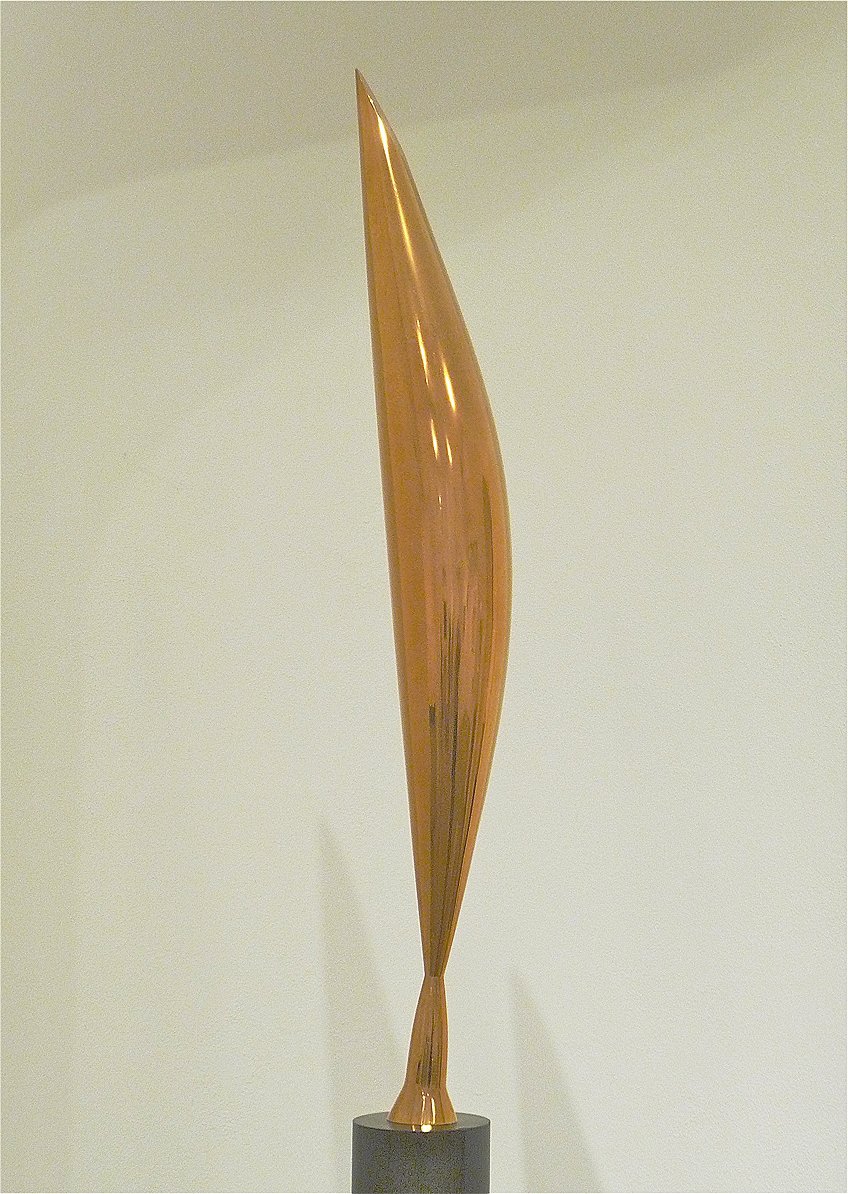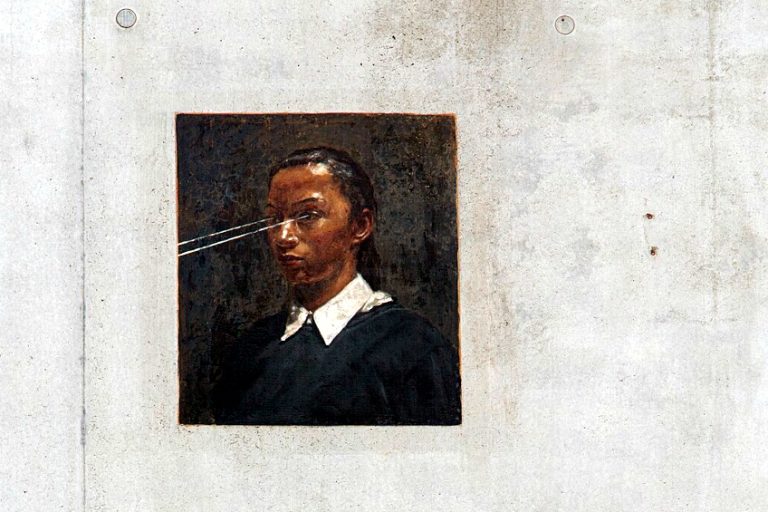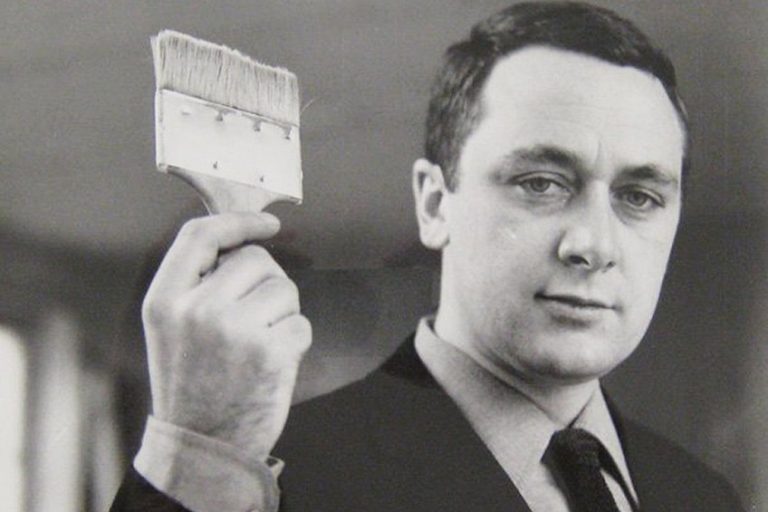18 Famous Sculptors – Sculpting the Ages
Welcome to the captivating world of sculptors, where marble comes to life, bronze breathes with emotion, and clay captures the essence of humanity. In this whirlwind journey through time and talent, we’ll explore the masterful hands behind some of history’s most iconic sculptures. From the towering genius of Michelangelo to the whimsical creations of Yayoi Kusama, join us as we unravel the stories, secrets, and sheer brilliance of famous sculptors who dared to mold the world around them into everlasting art. Brace yourself for a thrilling adventure across continents, centuries, and the boundless imagination of sculptural mastery!
Table of Contents
- 1 Top 18 Most Famous Sculptors to Know
- 1.1 Praxiteles (395 BC – 330 BC)
- 1.2 Donatello (1386 – 1466)
- 1.3 Michelangelo (1475 – 1564)
- 1.4 Gian Lorenzo Bernini (1598 – 1680)
- 1.5 Antonio Canova (1757 – 1822)
- 1.6 Auguste Rodin (1840 – 1917)
- 1.7 Constantin Brâncuși (1876 – 1957)
- 1.8 Alexander Calder (1898 – 1976)
- 1.9 Henry Moore (1898 – 1986)
- 1.10 Alberto Giacometti (1901 – 1966)
- 1.11 Barbara Hepworth (1903 – 1975)
- 1.12 Louise Bourgeois (1911 – 2010)
- 1.13 Claes Oldenburg (1929 – 2022)
- 1.14 Yayoi Kusama (1929 – Present)
- 1.15 Anish Kapoor (1954 – Present)
- 1.16 Jeff Koons (1955 – Present)
- 1.17 Ai Weiwei (1957 – Present)
- 1.18 Rachel Whiteread (1963 – Present)
- 2 Frequently Asked Questions
Top 18 Most Famous Sculptors to Know
Embark on a captivating journey through the realm of sculptural mastery with the top 18 artists who have shaped the course of art history. From the ancient elegance of Praxiteles to the contemporary provocations of Ai Weiwei, each sculptor unveils a unique vision and technique that transcends time and tradition.
Prepare to be enthralled by the breadth and depth of artistic expression as we delve into the lives, works, and enduring legacies of these remarkable creators.
Praxiteles (395 BC – 330 BC)
| Birth | 395 BC |
| Death | 330 BC |
| Place of Birth | Athens, Greece |
| Notable Artworks |
|
Praxiteles, an ancient Greek sculptor, revolutionized the portrayal of the human form with his exquisite attention to detail and naturalistic poses. His contributions include the creation of the first life-size female nude sculpture, such as the renowned Aphrodite of Knidos, which set new standards for beauty and sensuality in Greek art.

Donatello (1386 – 1466)
| Birth | c. 1386 |
| Death | December 13, 1466 |
| Place of Birth | Florence, Italy |
| Notable Artworks |
|
Donatello, a leading figure of the Italian Renaissance, pioneered techniques in bronze casting and sculpted with remarkable realism and emotional depth. His works, like the bronze David and the haunting Mary Magdalene, showcase his mastery of expression and anatomical precision, influencing generations of sculptors to come.

Michelangelo (1475 – 1564)
| Birth | March 6, 1475 |
| Death | February 18, 1564 |
| Place of Birth | Caprese near Arezzo, Republic of Florence (now Italy) |
| Notable Artworks |
|
Michelangelo Buonarroti, the quintessential Renaissance man, transcended the bounds of sculpture with his awe-inspiring creations, notably the marble masterpieces David and Pietà, and the monumental achievement of the Sistine Chapel ceiling frescoes.
His profound understanding of human anatomy and profound spirituality reshaped the possibilities of sculpture and remains unparalleled in its grandeur and beauty.

Gian Lorenzo Bernini (1598 – 1680)
| Birth | December 7, 1598 |
| Death | November 28, 1680 |
| Place of Birth | Naples, Italy |
| Notable Artworks |
|
Gian Lorenzo Bernini, the Baroque virtuoso, infused his sculptures with dramatic intensity and dynamic movement, epitomized in masterpieces like Apollo and Daphne and The Ecstasy of Saint Teresa. His innovative use of light, texture, and space created theatrical experiences that captivate viewers and define the essence of Baroque sculpture.

Antonio Canova (1757 – 1822)
| Birth | November 1, 1757 |
| Death | October 13, 1822 |
| Place of Birth | Possagno, Republic of Venice (now Italy) |
| Notable Artworks |
|
Antonio Canova, the neoclassical sculptor from Italy, revived the classical ideals of beauty and harmony in his exquisite marble sculptures, including Psyche Revived by Cupid’s Kiss and Napoleon as Mars the Peacemaker. His works epitomize the grace, elegance, and emotional restraint of neoclassical sculpture, leaving an enduring legacy of timeless beauty.

Auguste Rodin (1840 – 1917)
| Birth | November 12, 1840 |
| Death | November 17, 1917 |
| Place of Birth | Paris, France |
| Notable Artworks |
|
Auguste Rodin, the French sculptor often hailed as the father of modern sculpture, challenged traditional conventions with his expressive, fragmented forms and raw emotional power. His iconic works, such as The Thinker and The Kiss, revolutionized sculptural techniques and inspired generations of artists to explore new realms of introspection and passion.

Constantin Brâncuși (1876 – 1957)
| Birth | February 19, 1876 |
| Death | March 16, 1957 |
| Place of Birth | Hobița, Romania |
| Notable Artworks |
|
Constantin Brâncuși, the Romanian sculptor, forged a path of pure abstraction and simplified forms, reshaping modern sculpture with his groundbreaking works like Bird in Space and The Endless Column. His minimalist approach and spiritual connection to nature laid the groundwork for the modernist movement, influencing artists worldwide with his profound simplicity and elegance.

Alexander Calder (1898 – 1976)
| Birth | July 22, 1898 |
| Death | November 11, 1976 |
| Place of Birth | Lawnton, Pennsylvania, United States |
| Notable Artworks |
|
Alexander Calder, the American sculptor and inventor of the mobile, introduced kinetic energy and playful movement into sculpture with his whimsical creations like the hanging mobiles and monumental stabiles. His innovative use of wire, sheet metal, and brightly colored paint transformed sculpture into dynamic, interactive experiences, blurring the line between art and audience.

Henry Moore (1898 – 1986)
| Birth | July 30, 1898 |
| Death | August 31, 1986 |
| Place of Birth | Castleford, Yorkshire, England |
| Notable Artworks |
|
Henry Moore, the British sculptor, redefined the possibilities of form and space in sculpture with his monumental, abstracted figures inspired by natural forms like bones, rocks, and shells. His iconic reclining figures and monumental public sculptures, such as Large Reclining Figure and Three Piece Reclining Figure, embody a timeless universality and serene beauty that resonate with viewers worldwide.

Alberto Giacometti (1901 – 1966)
| Birth | October 10, 1901 |
| Death | January 11, 1966 |
| Place of Birth | Borgonovo, Stampa, Switzerland |
| Notable Artworks |
|
Alberto Giacometti, the Swiss sculptor and painter, explored themes of existentialism and the human condition through his elongated, haunting figures, such as The Walking Man and Woman with Her Throat Cut. His distinctive style, characterized by thin, fragile forms and intense psychological depth, captured the essence of post-war anxiety and existential angst, cementing his place as one of the most influential sculptors of the 20th century.
Barbara Hepworth (1903 – 1975)
| Birth | January 10, 1903 |
| Death | May 20, 1975 |
| Place of Birth | Wakefield, West Yorkshire, England |
| Notable Artworks |
|
Barbara Hepworth, the British sculptor and leading figure of the modernist movement, celebrated the organic beauty of the natural world through her abstract, pierced forms and smooth, flowing contours. Her sculptures, like Single Form and Pelagos, seamlessly blend art and landscape, inviting viewers to contemplate the relationship between humanity and the environment with a sense of harmony and reverence.

Louise Bourgeois (1911 – 2010)
| Birth | December 25, 1911 |
| Death | May 31, 2010 |
| Place of Birth | Paris, France |
| Notable Artworks |
|
Louise Bourgeois, the French-American sculptor and pioneer of confessional art, delved into themes of trauma, sexuality, and the subconscious through her provocative, emotionally charged sculptures, such as Maman and The Destruction of the Father.
Her bold exploration of the female experience and the complexities of human relationships challenged societal norms and expanded the possibilities of contemporary sculpture.

Claes Oldenburg (1929 – 2022)
| Birth | January 28, 1929 |
| Death | Present |
| Place of Birth | Stockholm, Sweden |
| Notable Artworks |
|
Claes Oldenburg, the Swedish-American pop artist, transformed everyday objects into monumental sculptures that humorously subverted the mundane, such as his iconic giant soft sculptures like The Soft Toilet and Shuttlecock. His playful approach to scale and materiality challenged the boundaries of traditional sculpture and blurred the lines between art and popular culture, inviting viewers to reconsider the objects that surround them in a new light.

Yayoi Kusama (1929 – Present)
| Birth | March 22, 1929 |
| Death | Present |
| Place of Birth | Matsumoto City, Nagano, Japan |
| Notable Artworks |
|
Yayoi Kusama, the Japanese contemporary artist, is renowned for her immersive installations, polka-dotted sculptures, and surreal environments that reflect her fascination with infinity, obsession, and the subconscious. From her iconic Infinity Mirrored Rooms to her giant pumpkin sculptures, Kusama’s work transcends traditional boundaries, inviting viewers to lose themselves in a kaleidoscopic world of wonder and reflection.

Anish Kapoor (1954 – Present)
| Birth | March 12, 1954 |
| Death | Present |
| Place of Birth | Mumbai, India |
| Notable Artworks |
|
Anish Kapoor, the Indian-born British sculptor, captivates audiences with his monumental, enigmatic forms that play with perception, light, and space. From the reflective surfaces of Cloud Gate to the mesmerizing depths of his pigment sculptures, Kapoor’s work invites contemplation and introspection, challenging viewers to explore the boundaries between reality and illusion.

Jeff Koons (1955 – Present)
| Birth | January 21, 1955 |
| Death | Present |
| Place of Birth | York, Pennsylvania, United States |
| Notable Artworks |
|
Jeff Koons, the controversial American artist, challenges notions of taste, consumerism, and the art market with his larger-than-life sculptures of banal objects rendered in gleaming stainless steel, such as Balloon Dog and Rabbit. His audacious embrace of kitsch and popular culture sparks dialogue and debate about the value of art and the nature of contemporary society, leaving an indelible mark on the art world.

Ai Weiwei (1957 – Present)
| Birth | August 28, 1957 |
| Death | Present |
| Place of Birth | Beijing, China |
| Notable Artworks |
|
Ai Weiwei, the Chinese artist and activist, confronts political oppression, human rights abuses, and social injustice through his provocative, politically charged sculptures and installations, such as Remembering and Sunflower Seeds. His fearless advocacy for freedom of expression and his unflinching critique of authority resonate globally, inspiring others to speak out against oppression and champion the power of art as a force for change.

Rachel Whiteread (1963 – Present)
| Birth | April 20, 1963 |
| Death | Present |
| Place of Birth | London, England |
| Notable Artworks |
|
Rachel Whiteread, the British sculptor, is renowned for her innovative casting techniques and her exploration of negative space, memory, and absence in works like House and the Holocaust Memorial in Vienna. Her hauntingly beautiful sculptures, often cast from the spaces inside everyday objects, challenge viewers to reconsider their perceptions of space and the traces of human presence left behind, inviting contemplation and reflection on the passage of time and the fragility of existence.

As we conclude our exploration of famous sculptors, one thing becomes abundantly clear: their legacy is etched not only in stone but in the very fabric of human history and culture. From the grandeur of ancient civilizations to the avant-garde visions of modernity, sculptors have left an indelible mark on the world’s artistic landscape. As we bid farewell to these masters of form and substance, let us carry forward their spirit of innovation, passion, and boundless creativity. For in their hands, they didn’t just shape clay, metal, or marble; they sculpted the very essence of our shared human experience, reminding us that art, in all its forms, continues to inspire, provoke, and elevate our souls.
Frequently Asked Questions
What Materials Do Sculptors Commonly Use?
Sculptors employ a wide range of materials to bring their artistic visions to life. Traditional materials include marble, bronze, wood, and clay, each offering distinct qualities of texture, durability, and malleability. In modern and contemporary sculpture, artists have expanded their repertoire to incorporate unconventional materials such as steel, glass, plastic, found objects, and even organic matter. The choice of material often depends on the artist’s aesthetic preferences, conceptual goals, technical expertise, and the intended impact of the artwork on the viewer.
What Are Some Famous Sculpture Movements and Styles Throughout History?
Throughout history, sculpture has evolved through various movements and styles, each reflecting the cultural, social, and artistic trends of its time. Some notable movements include Ancient Greek and Roman sculpture characterized by idealized human forms and narrative reliefs; the Renaissance period marked by realism, proportion, and classical influences; the Baroque era known for its dramatic dynamism and emotional intensity; and the modernist and contemporary movements encompassing abstraction, minimalism, conceptualism, and installation art. These movements have shaped the trajectory of sculpture, influencing the techniques, themes, and expressions explored by artists across generations.
Isabella studied at the University of Cape Town in South Africa and graduated with a Bachelor of Arts majoring in English Literature & Language and Psychology. Throughout her undergraduate years, she took Art History as an additional subject and absolutely loved it. Building on from her art history knowledge that began in high school, art has always been a particular area of fascination for her. From learning about artworks previously unknown to her, or sharpening her existing understanding of specific works, the ability to continue learning within this interesting sphere excites her greatly.
Her focal points of interest in art history encompass profiling specific artists and art movements, as it is these areas where she is able to really dig deep into the rich narrative of the art world. Additionally, she particularly enjoys exploring the different artistic styles of the 20th century, as well as the important impact that female artists have had on the development of art history.
Learn more about Isabella Meyer and the Art in Context Team.
Cite this Article
Isabella, Meyer, “18 Famous Sculptors – Sculpting the Ages.” Art in Context. March 4, 2024. URL: https://artincontext.org/18-famous-sculptors/
Meyer, I. (2024, 4 March). 18 Famous Sculptors – Sculpting the Ages. Art in Context. https://artincontext.org/18-famous-sculptors/
Meyer, Isabella. “18 Famous Sculptors – Sculpting the Ages.” Art in Context, March 4, 2024. https://artincontext.org/18-famous-sculptors/.











